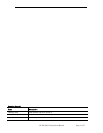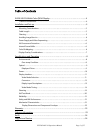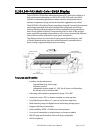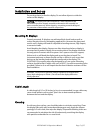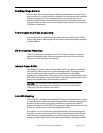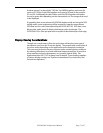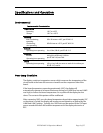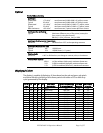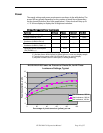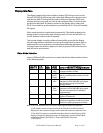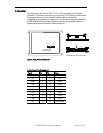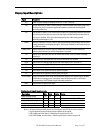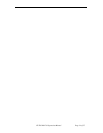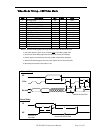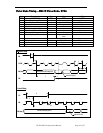
EL320.240-FA3 Operations Manual Page 6 of 25
Avoiding Image Burn-In
As with other light emitting displays, displaying fixed patterns on the screen
may cause burn-in, where luminance variations can be noticed after hundreds
of hours of operation. To avoid image burn-in, use a screen saver or use
periodic image inversion if possible. Note that the rate of image burn-in will
slow over time such that most of the burned-in image effect occurs in the first
1000 hours of operation.
Power Supply and Video Sequencing
Any combination or sequencing in the application or removal of VH (12VDC
input power)and/or video signals will not result in abnormal display operation
or display failure
.
VH Overcurrent Protection
There is no overcurrent protection on VH, the 12V power input. To protect
against catastrophic faults, Planar recommends the use of a fuse or similar
protection on the VH input to the display.
Internal Frame Buffer
This display includes an internal frame buffer, which is required to transform
the incoming video data into the desired displayed data. The display frame
rate (the rate at which the phosphor is scanned) and thus the display
brightness are independent of the frame rate of the user-supplied input data.
Video data need not be continuously sent to the display since previously sent
data is stored indefinitely until new data is received.
CAUTION: Some third-party video controllers use frame dithering algorithms
to produce gray scale images. If such algorithms are used, the internal frame
buffer may cause objectionable visual artifacts.
Color Bit Mapping
The EL320.240-FA3 utilizes standard AMLCD-type video interface timing. Thus
it is possible that a video source will be chosen which provides 18 bits of data
per pixel (six bits each for red, green, and blue) as is common for AMLCD
displays. Because the EL320.240-FA3 requires just 4 bits (two each for red and
green), the 18 bits would need to be mapped into 4 bits.
One option is to use just the two most significant bits of red and green and
leave the rest open or terminated. This is the easiest approach and will work
well if the user is developing their own content and can refrain from using
patterns containing dim colors since these would likely be displayed as black.




